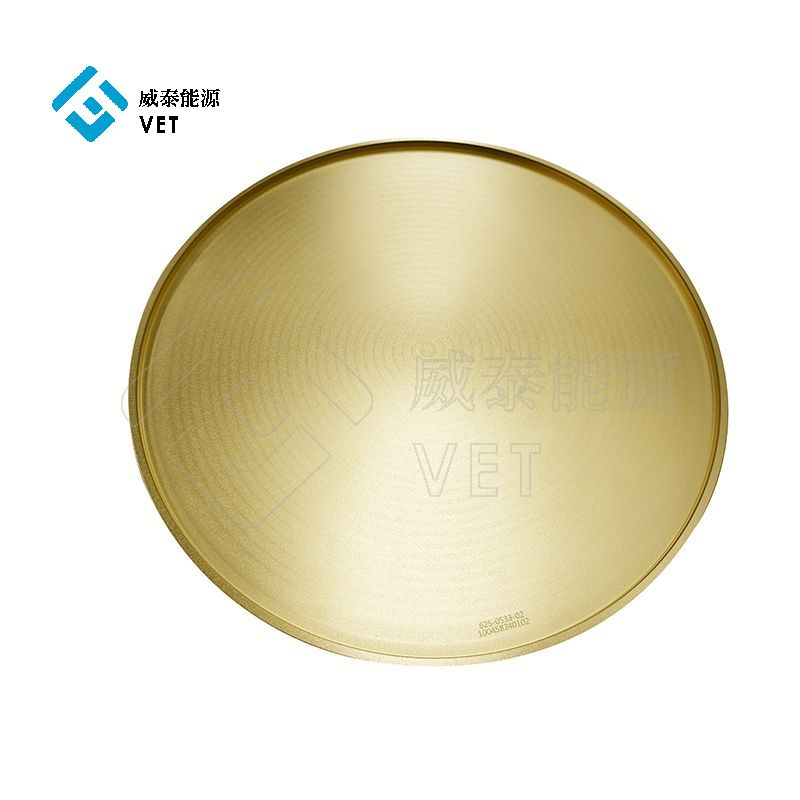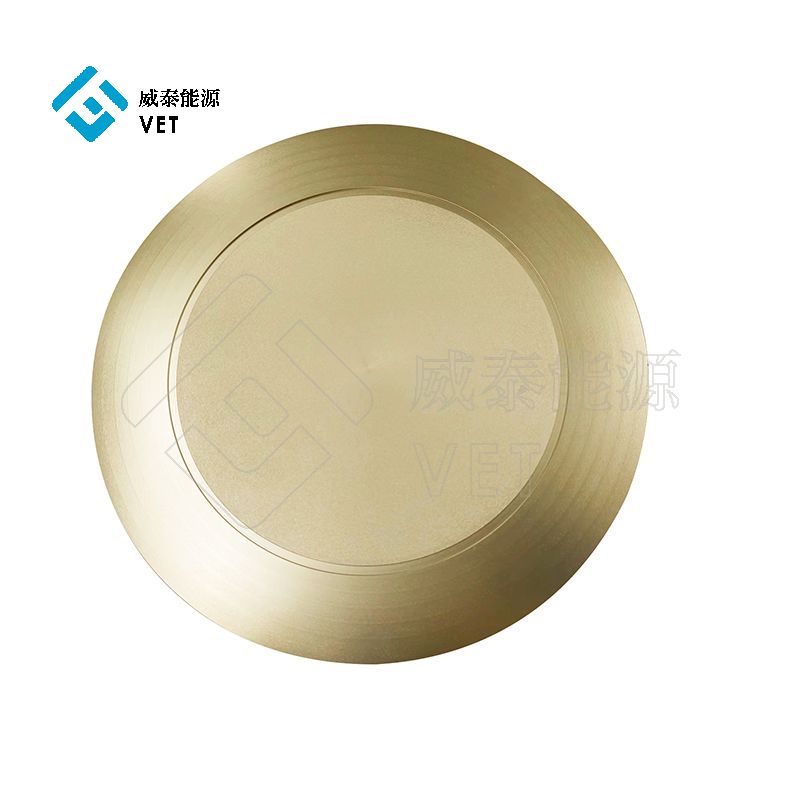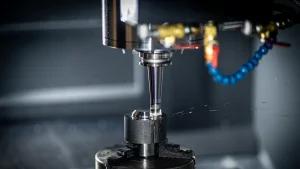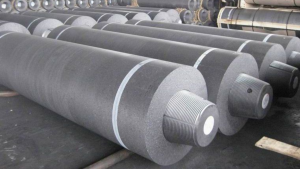Chemical Vapor Deposition (CVD) TaC coatings play a critical role in industries requiring high-performance materials. The market has experienced consistent growth, driven by advancements in material science and increasing demand from sectors like aerospace and semiconductors. For example, TaC coatings enhance turbine blade durability and protect semiconductor components under extreme conditions.
Ningbo VET Energy Technology Co. has revolutionized the industry by showcasing TaC’s superiority over グラファイトコーティング and silicon carbide in single crystal growth. This innovation highlights TaC’s unmatched thermal resistance and chemical stability, ensuring defect-free results. Projections indicate a robust compound annual growth rate (CAGR) for the CVD TaCのコーティング market through 2025, reflecting its expanding applications across diverse sectors.

要点
- CVD TaCのコーティング help high-tech tools work better. They stay strong in heat and resist wearing out.
- New methods make it easier to control coating thickness. This makes parts last longer and prevents peeling.
- The CVD TaC coating industry now uses greener methods. They recycle more to help protect the planet.
Key Trends in CVD TaC Coatings for 2025
蒸着技術の進歩
Recent advancements in deposition techniques have significantly improved the quality and efficiency of CVD TaC coatings. These innovations enable the creation of highly uniform coatings with seamless adhesion to substrates. By allowing precise control over coating thickness, ranging from 20 µm to 200 µm, manufacturers can tailor coatings to meet specific application requirements. Enhanced bond strength has also reduced the risk of delamination, extending the lifespan of coatings in high-stress environments.
- Advanced methods now produce high-purity, dense, and uniform TaC coatings at lower temperatures.
- Improved techniques enhance resistance to extreme temperatures and corrosive conditions.
- These developments ensure longer-lasting coatings, particularly in semiconductor manufacturing.
The integration of nanostructuring has further increased hardness and thermal stability, making CVD TaC coatings indispensable for high-tech industries. Enhanced heat distribution capabilities also ensure uniform processing conditions, improving the consistency and quality of final products.
Customization for Industry-Specific Applications
CVD TaC coatings are increasingly tailored to meet the unique demands of various industries. In aerospace, these coatings protect turbine blades and engine housings from extreme temperatures and pressures. The automotive sector benefits from their wear resistance, particularly in electric vehicle components requiring efficient heat dissipation.
Other applications include:
- 原子力エネルギー: Protecting graphite parts in reactors from oxidation.
- エレクトロニクス: Enhancing thermal management in high-power devices.
- 化学処理: Providing a barrier against harsh chemicals.
- ツーリング・製造: Extending the lifespan of cutting tools and dies.
This level of customization ensures that CVD TaC coatings remain versatile and effective across diverse applications.
Enhanced Performance in Aerospace and Semiconductor Sectors
CVD TaC coatings deliver exceptional performance enhancements in aerospace and semiconductor industries. In aerospace, they improve turbine blades and engine components by providing thermal stability and oxidation resistance. These properties enable components to withstand extreme conditions, reducing wear and extending operational lifespans.
| Performance Enhancement | 説明 |
|---|---|
| 卓越した硬度 | Ideal for cutting tools and wear-resistant coatings. |
| 熱安定性 | Withstands extreme temperatures and pressures. |
In the semiconductor sector, CVD TaCのコーティング protect equipment used in wafer processing and microchip manufacturing. Their chemical resistance minimizes contamination risks, ensuring consistent results and higher yields. These advancements position CVD TaC coatings as critical to the future of high-performance industries.
Innovations Driving the CVD TaC Coating Market

Emerging Technologies in Coating Processes
Emerging technologies are reshaping the development of CVD TaC coating processes. Innovations in material science and nanotechnology have enhanced the properties of tantalum carbide coatings, particularly in hardness and thermal resistance. Researchers are now focusing on nanostructured TaC coatings that are thinner yet more durable. This approach reduces material usage and lowers production costs, making these coatings more accessible to a broader range of industries.
Advancements in manufacturing technologies, including both CVD and PVD methods, have also improved the efficiency of TaC coating applications. These methods minimize waste and enhance scalability, enabling manufacturers to meet growing demand. For instance, high-purity coatings with precise thickness control are now achievable, ensuring consistent performance across various applications.
Sustainability and Green Coating Initiatives
Sustainability has become a key focus in the CVD TaC coating industry. The recyclability of tantalum carbide supports a circular economy by allowing the recovery of tantalum from end-of-life products. This closed-loop approach promotes resource efficiency, particularly in the electronics sector.
Eco-friendly coating solutions are also gaining traction. Water-based and solvent-free formulations are replacing traditional methods, reducing environmental impact. Additionally, energy-efficient coating processes are being implemented to lower carbon emissions. These green initiatives align with global sustainability goals, appealing to environmentally conscious stakeholders and driving market growth.
Integration with Electric Vehicles and Renewable Energy
CVD TaCのコーティング play a critical role in advancing electric vehicles (EVs) and renewable energy technologies. Their wear resistance and thermal stability enhance the performance of components like graphite parts used in lubrication and heat dissipation. These properties are essential for maintaining efficiency in EV systems.
In renewable energy, TaC-coated graphite electrodes are being explored for use in batteries and supercapacitors. Their superior thermal stability improves energy efficiency and extends battery life, making them a valuable asset in energy storage solutions. This integration highlights the versatility and importance of CVD TaC coatings in modern technological advancements.
市場力学および成長の運転者
Industry Segmentation and Key Applications
CVD TaC coating technologies serve a wide range of industries, each with unique application requirements. The semiconductor sector relies on these coatings to protect components during wafer processing and microchip manufacturing. Their ability to withstand extreme conditions ensures consistent performance and extended component lifespans. In aerospace and defense, CVD TaC coatings enhance turbine blades and engine components, enabling them to endure high temperatures and pressures.
Industrial machinery benefits from the durability and corrosion resistance provided by these coatings, reducing maintenance needs and extending equipment life. In energy and power generation, CVD TaC coatings maintain structural integrity in turbines and reactors, even under harsh operating conditions.
| Industry Segment | Application Description |
|---|---|
| Semiconductor | Protects components from extreme conditions, enhancing performance and longevity in wafer processing and microchip manufacturing. |
| 航空宇宙・防衛 | Improves performance of turbine blades and engine components, crucial for high-temperature environments. |
| 産業機械 | Enhances durability and reduces maintenance, protecting equipment from wear and corrosion. |
| エネルギー・発電 | Withstands harsh operating conditions, maintaining structural integrity in turbines and reactors. |
Regional Trends and Market Expansion
The global adoption of CVD TaC coatings continues to grow, with notable trends shaping regional markets. The EMEA region experiences steady growth, driven by investments in high-performance materials for aerospace and energy sectors, particularly in Germany and France. The Asia-Pacific region leads in market expansion due to industrial growth and technological advancements. Countries like China, Japan, and South Korea dominate demand in semiconductor manufacturing and aerospace.
Emerging markets in Latin America and Africa present significant opportunities. Urbanization and industrialization fuel demand for durable materials in energy, construction, and transportation sectors. These regions focus on infrastructure development, creating a fertile ground for CVD TaC coating applications.
| エリア | 成長の運転者 |
|---|---|
| Asia-Pacific | Industrial expansion, technological advancements, semiconductor manufacturing, aerospace growth. |
| EMEA | Steady growth from aerospace and energy sectors, investments in high-performance materials. |
| Latin America | Rapid urbanization and industrialization, demand for durable materials in energy and construction. |
| Africa | Emerging market potential due to industrialization and infrastructure investments. |
Role of Automation in Scaling Production
Automation plays a pivotal role in meeting the growing demand for CVD TaC coatings. Advanced robotics and AI-driven systems streamline production processes, ensuring consistent quality and reducing human error. Automated deposition systems enhance precision, enabling manufacturers to produce uniform coatings with minimal material waste.
Scalability remains a critical factor in the industry. Automation allows manufacturers to increase production capacity without compromising quality. This capability is essential for addressing the rising demand from sectors like semiconductors and aerospace. By integrating automation, companies can achieve cost efficiency and maintain a competitive edge in the global market.
Challenges and Opportunities in CVD TaC Coatings
Addressing Production Constraints
The production of CVD TaC coatings faces significant challenges due to the complexity of raw material extraction and processing. Tantalum and carbon compounds, essential for these coatings, are not only scarce but also expensive to procure. This scarcity drives up production costs, making it difficult for manufacturers to scale operations efficiently.
Stringent environmental regulations further complicate the production process. Manufacturers must comply with these rules while maintaining the high quality of their coatings. For example, reducing emissions during the deposition process requires advanced technologies, which add to operational expenses. Despite these hurdles, companies are exploring innovative solutions, such as optimizing material usage and adopting energy-efficient methods, to mitigate these constraints.
Overcoming Supply Chain Issues
The global supply chain for CVD TaC coatings remains vulnerable to disruptions. Several factors contribute to this instability:
- High costs associated with extracting and processing raw materials.
- Limited availability of tantalum and carbon compounds.
- Delays and price fluctuations caused by international supply chain dependencies.
- Regulatory and environmental compliance challenges.
To address these issues, companies are diversifying their supply chains by sourcing materials from multiple suppliers. Establishing local partnerships has also proven effective in reducing reliance on international markets. Additionally, adopting sustainable production technologies helps manufacturers minimize environmental impact while maintaining high-quality standards. These strategies ensure greater resilience against supply chain disruptions.
The Need for Continuous Innovation
Continuous innovation drives the growth of the CVD TaC coating industry. Advancements in material science and nanotechnology have significantly improved the properties of TaC coatings. For instance, researchers are developing nanostructured coatings that enhance hardness, thermal resistance, and wear resistance. These innovations result in thinner yet more durable coatings, reducing material usage and production costs.
Emerging techniques, such as laser cladding and physical vapor deposition (PVD), offer precise control over coating thickness and uniformity. These methods provide superior adhesion and performance, making them ideal for high-performance applications. By focusing on innovation, the industry can unlock new applications in sectors like aerospace, semiconductors, and biomedical engineering, ensuring sustained market growth.
The future of CVD TaC coatings is shaped by groundbreaking trends and innovations. Advancements in coating technologies, sustainability initiatives, and rising demand in emerging markets are driving the industry forward.
| Key Takeaway | 説明 |
|---|---|
| Advancements in Coating Technologies | Manufacturers are using advanced methods like PECVD and ALD for precise and uniform coatings. |
| Focus on Sustainability | Development of eco-friendly solutions and energy-efficient processes to reduce environmental impact. |
| Rising Demand in Emerging Markets | Increased industrialization in Asia-Pacific and Latin America is driving the need for high-performance materials. |
| Innovations in Material Science | Research into nanostructured TaC coatings enhances properties and reduces material usage. |
CVD TaC technologies hold transformative potential for 2025 and beyond. Their exceptional hardness, thermal stability, and chemical resistance make them indispensable in aerospace and semiconductor industries. Ningbo VET Energy Technology Co. leads the market by adopting advanced methods like PECVD and ALD, automating production for efficiency, and developing eco-friendly solutions. These efforts position the company as a pioneer in delivering high-performance coatings aligned with global sustainability goals.
製品の詳細については、下記までお問い合わせください。 steven@china-vet.com またはウェブサイト: www.vet-china.com.






